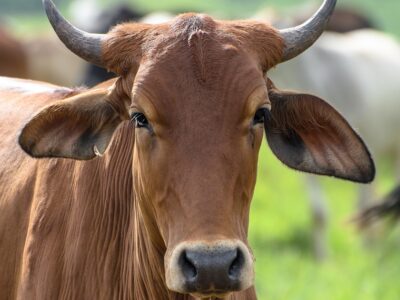Below you can find a complete list of Lao animals. We currently track 257 animals in Lao Peoples Democratic Republic and are adding more every day!
Despite being surrounded on all sides by land, the Southeast Asian country of Laos maintains three distinct ecosystems. Mountains to the north give way to a plateau in the center of the country before extending into lush broadleaf forest. Trees tend to touch practically everything that hasn’t been uprooted for the sake of human settlements, and the presence of a wet season with frequent monsoons ensures a tropical rainforest environment throughout most of the country.
The density and vitality of the forests and wetlands to the south have made them a veritable paradise for primates and birds. Only two of the 767 bird species in Laos were introduced by humans, and they include a wide selection of bright and tropical species. Six different species of gibbon have managed to carve out communities for themselves despite approaching extinction. But Laos’ ecological diversity also allows it to support large roaming herbivores like elephants and vicious and solitary predators like the clouded leopard.
The Official National Animal of Lao Peoples Democratic Republic
The elephant is the official national animal of Laos, a reflection on both the unique virtues of this unique animal and on the spiritual makeup of the Laotian people. Buddhism is the predominant spirituality in Laos, and Buddhism recognizes the elephant as a symbol of mental and physical fortitude as well as loyalty. In more unique national terms, the elephant is seen as a symbol of the legendary kingdom of Lan Xang. Lan Xang holds importance as a symbol of Laos’ noble history and future potential. For these reasons, Laos is sometimes known as the “Land of a Million Elephants”.
Where To Find The Top Wild Animals in Lao Peoples Democratic Republic
Laos may be home to a number of endangered species, but there’s also been a conscious effort to make sure that their ecological beauty is highlighted. In many cases, you’ll find sanctuaries dedicated to specific at-risk species. There are multiple elephant sanctuaries as well as conservation-oriented habitats for the various endangered gibbon species.
Most of these reserves and sanctuaries are privately owned and offer tours that allow you glimpses of the animals. Unfortunately, these are increasingly becoming the last remaining places where many of these animals can be seen — and that’s particularly true of huge, roving animals like elephants who are rapidly losing the amount of wild space they need to survive.
The Most Dangerous Animals In Lao Peoples Democratic Republic Today
Whether you’re up in the mountains or down in the wetlands, there is some seriously dangerous wildlife throughout the habitats of Laos. And while many of these fearsome predators are actually endangered species, that doesn’t mean you should be staring down this type of wildlife.
- Snakes pose arguably the clearest and present animal threat in Laos. The country is home to 22 different species of venomous snakes, and some of them rank among the most dangerous in the world. The Malayan Krait, for instance, kills half of the people it bites. That’s in part due to the fact that the venom can kill you in 12 hours.
- Tigers are mostly extinct in Laos, but the clouded leopard is more than capable of making up the difference. Despite being relatively small and solitary, they’re every bit as fierce as a tiger when cornered. Some have even been known to pick fights with crocodiles.
- The sun bear may look cuter than its black and brown counterparts, but that doesn’t make it any less dangerous, or any less protective of their young. In fact, their four-inch-long claws are especially painful as weapons. Fortunately, sun bears are nocturnal and rarely come into contact with humans.
Endangered Animals
Laos’ fauna diversity is a priceless boon, but the country is also home to a large number of endangered animals. Two breeds of rhinoceros (the Sumatran and Javan) and the massive ox known as a kouprey are all classified as critically endangered wildlife and are particularly at risk of becoming extinct.
Also endangered but not on the critically endangered list are Siamese crocodiles, the Asian elephant, and the tiger. All told, nearly 20% of the indigenous life in Laos is considered a vulnerable or endangered species. Fortunately, increased attention to poaching and the rising success of ecotourism in Laos are helping spur conservation efforts throughout the country.
Lao Animals

Admiral Butterfly
Stunningly beautiful wings

Ant
First evolved 100 million years ago!

Antelope
Renew their horns every year!

Archerfish
Archerfish can shoot a stream of water up to five feet with amazing accuracy.

Armyworm
They are so named because they "march" in armies of worms from one crop to another in search of food

Asian Elephant
Domesticated for hundreds of years!
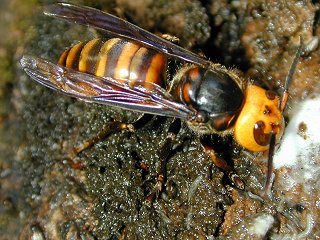
Asian Giant Hornet
The largest wasp in the world!
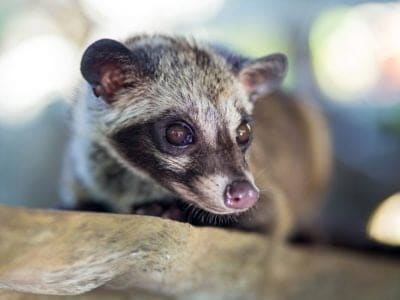
Asian Palm Civet
It mainly eats mangos and coffee!
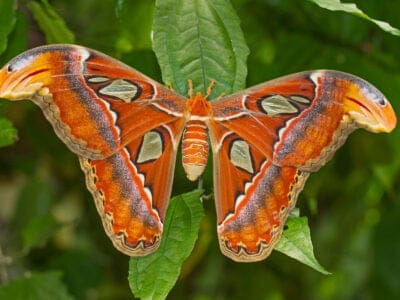
Atlas Moth
Adult atlas moths do not eat - they live off fat they stored as larvae.

Aurochs
Extinct ancestor of all domesticated cattle!

Bamboo Rat
They make a "boop, boop, boop" sound when danger draws near their burrow.
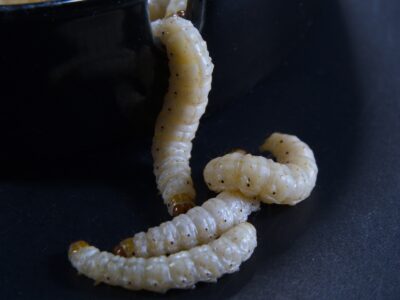
Bamboo Worms
Bamboo worms are the larvae of moths that are eaten as a delicious snack in some parts of Asia.

Banana Spider
People spin clothing and fishing nets out of these spiders’ silk.

Barb
There are over 1768 known species!

Barn Owl
Found everywhere around the world!

Barn Swallow
Older offspring help care for new hatchlings.

Bat
Detects prey using echolocation!

Bear
There are 8 different species!
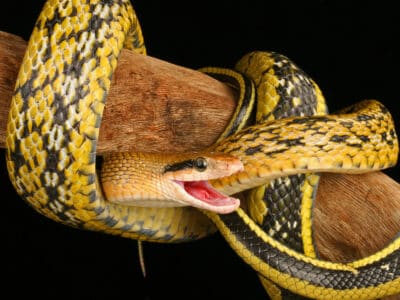
Beauty rat snake
Beauty Rat Snakes are relatively harmless if left undisturbed, only attempting to bite out of fear.

Bed Bugs
Bed bugs feed for 4-12 minutes.

Bee
Rock paintings of bees date back 15,000 years

Beetle
There are more than 350,000 different species
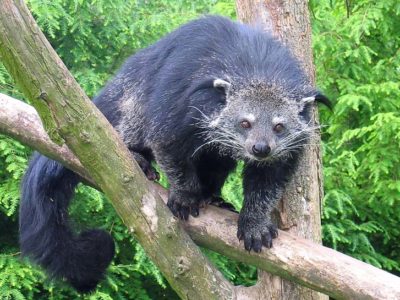
Binturong
Also known as the Asian Bearcat!

Bird
Not all birds are able to fly!

Biscuit Beetle
The biscuit beetle form a symbiotic relationship with yeast

Black Widow Spider
They typically prey on insects!
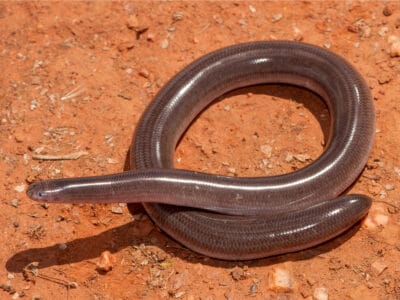
Blind Snake
The blind snake is often mistaken for a worm.
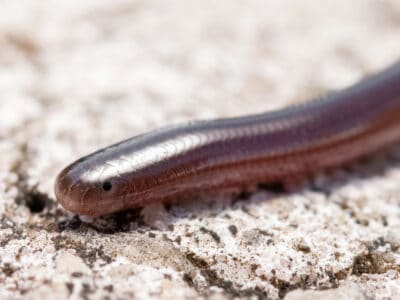
Brahminy Blindsnake
These snakes have been introduced to all continents, except Antarctica!

Brazilian Treehopper
“Mild-Mannered Minimonsters”
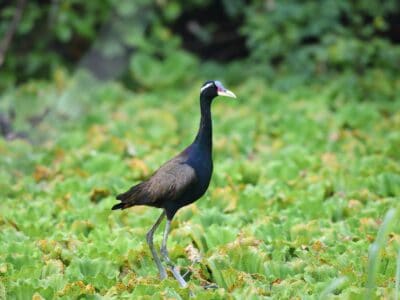
Bronze-winged Jacana
Fathers pick up their young and carry them under their wings

Brown Dog Tick
Can live its entire life indoors

Bumblebee
The most common species of bee!
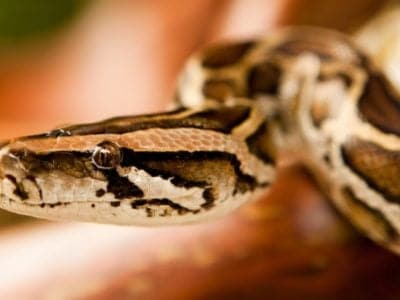
Burmese Python
These snakes can swallow their prey as whole.

Butterfly
There are thought to be up 17,500 species!

Camel Cricket
The camel crickets that are found in the USA are light brown in color. They also have dark streaks all over their body.

Carpenter Ant
Carpenter ants can lift up to seven times their own weight with their teeth!
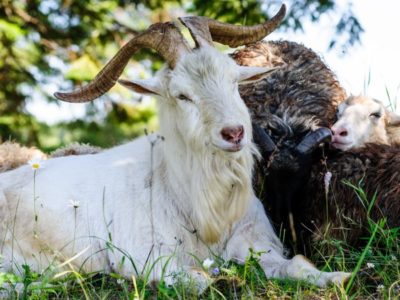
Cashmere Goat
Cashmere goat are named after Kashmir regions of India and Pakistan

Cat
May have been domesticated up to 10,000 years ago.

Caterpillar
The larvae of a moth or butterfly!

Catfish
There are nearly 3,000 different species!

Centipede
There are about 3,000 documented species!

Chicken
First domesticated more than 10,000 years ago!
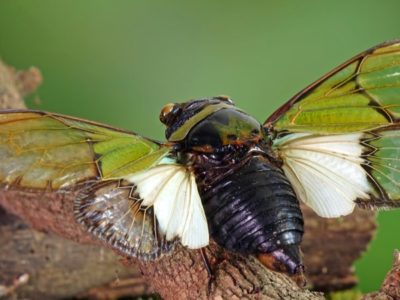
Cicada
Cicadas have one of the longest insect lifespans
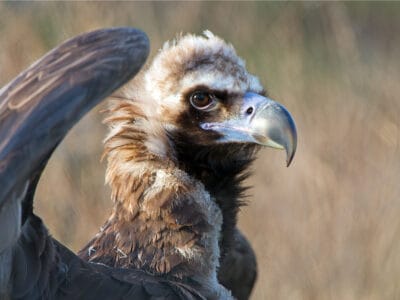
Cinereous Vulture
This vulture can fly at great heights. At least one was found a few thousand feet from the top of Mount Everest.
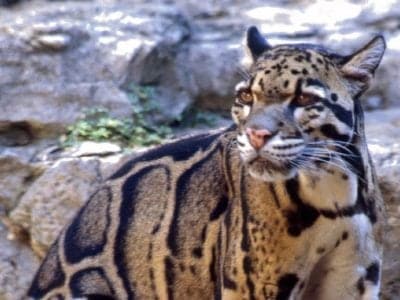
Clouded Leopard
Has canines that can be two inches long!

Cockroach
Dated to be around 300 million years old!

Codling Moth
Pupae are able to undergo diapause to survive poor fruit yield years and winter.

Common Buzzard
The most common raptor in the UK!

Common Furniture Beetle
The common furniture beetle feeds exclusively on wood

Common House Spider
House spiders have the ability to eat most insects in a home.

Common Raven
A group of ravens is called an unkindness or a conspiracy.

Coral Snake
There are over 80 species of coral snake worldwide.

Cormorant
They can fly 35 mph and dive 150 feet below water.
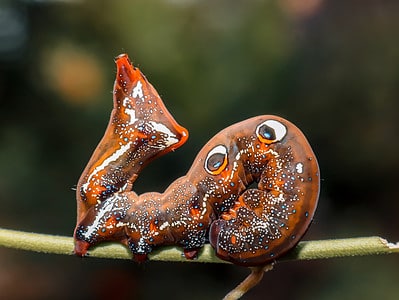
Cosmic Caterpillar
Cosmic caterpillars have spots on their back that look like eyes to scare off predators.

Cow
There are nearly 1.5 billion worldwide!

Cow Reticulated Python
Cow reticulated pythons hatch solid white, then develop spots as they mature.

Crab
There are 93 different crab groups
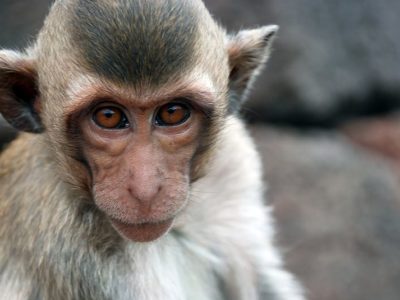
Crab-Eating Macaque
Found throughout the South-East Asian jungles!

Crab Spider
Crab Spiders can mimic ants or bird droppings

Crane
Many are critically endangered species!

Cricket
Male crickets can produce sounds by rubbing their wings together

Crocodile
Have changed little in 200 million years!

Crocodylomorph
Crocodylomorphs include extinct ancient species as well as 26 living species today.

Crow
A group of these birds is called a Murder.

Deer
There are around 40 different species!
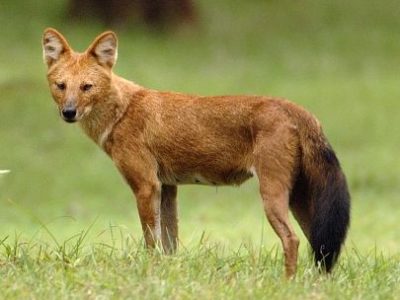
Dhole
Only 2,000 left in the wild!

Dog
First domesticated in South-East Asia!

Dog Tick
Dog ticks feed on dogs and other mammals

Donkey
First domesticated 5,000 years ago!
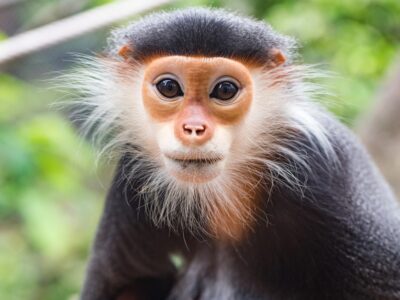
Douc
When these monkeys want to mate, they wiggle their eyebrows.
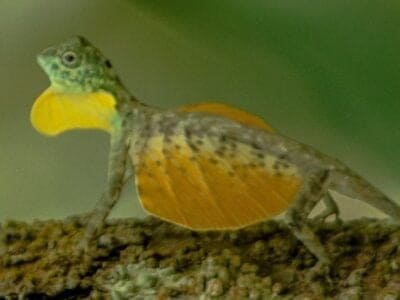
Draco Volans Lizard
Beneath the lizard’s “wings” are a pair of enlarged ribs for support.

Dragonfly
It's larvae are carnivorous!

Duck
Rows of tiny plates line their teeth!

Dung Beetle
The dung beetle can push objects many times its own weight

Eagle
Has exceptional eyesight!

Earthworm
They are hermaphrodites, which means they have male and female organs

Earwig
There are nearly 2,000 different species!

Eel
Eels can be a mere few inches long to 13 feet!

Elephant
Spends around 22 hours a day eating!

Falcon
The fastest creatures on the planet!

False Widow Spider
False spiders actually prey on black widow spiders and other hazardous spiders
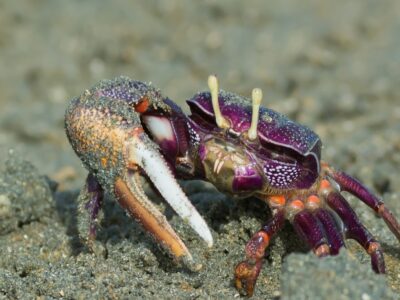
Fiddler Crab
The fiddler crab gets its name from the motion the males make with their over-sized claw during the mating ritual.
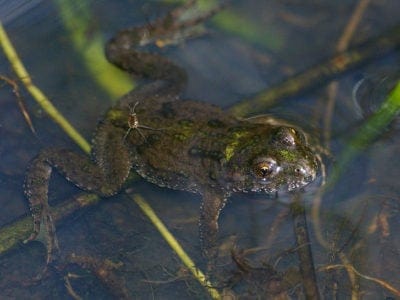
Fire-Bellied Toad
Found across mainland Europe and Asia!
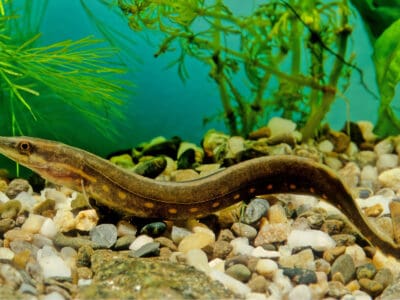
Fire Eel
Fire Eels are not true eels.

Firefly
The firefly produces some of the most efficient light in the world

Flea
Adult fleas can jump up to 7 inches in the air

Fly
There are more than 240,000 different species!

Flying Lemur
The second pair of upper incisors in a flying lemur has a double root, which is unique for mammals.

Flying Squirrel
Can glide up to 90 meters!

Fox
Only 12 species are considered "true foxes"

Frog
There are around 7,000 different species!
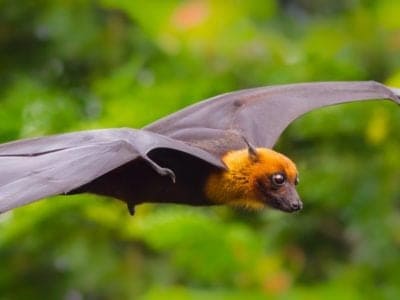
Fruit Bat
Among the largest bats in the world

Fruit Fly
Fruit flies are among the most common research animals in the world

Gazelle
Named for the Arabic word for love poems

Gecko
There are thought to be over 2,000 species!

Gerbil
Originally known as the Desert Rat!

German Cockroach
The most common type of urban roach

Gibbon
Found in dense jungles and tropical forests!

Glass Lizard
Can grow up to 4ft long!

Glowworm
Found inhabiting dense woodland and caves!

Gnat
Males form large mating swarms at dusk

Goat
Most closely related to the Sheep!

Golden Oriole
Migrates between Europe and Asia!

Goose
There are 29 different species!

Grasshopper
There are 11,000 known species!

Green Bee-Eater
Mainly eats honeybees!
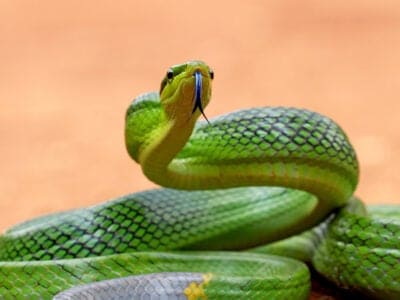
Green Rat Snake
The green rat snake catches its meals in midair!

Gypsy Moth
One of the most invasive species in the world

Hamster
Able to run as quickly backwards as forwards!

Hare
Can reach speeds of over 50 mph!

Hawk Moth Caterpillar
Many hawk moth caterpillars eat toxins from plants, but don’t sequester them the way milkweed butterflies do. Most toxins are excreted.

Hedgehog
Thought to be one of the oldest mammals on Earth!

Heron
Inhabits wetlands around the world!

Honey Bee
There are only 8 recognized species!

Hoopoe
Stunning bird with a stinky way to deter predators!

Horse
Has evolved over 50 million years!

Horsefly
Horseflies have been seen performing Immelmann turns, much like fighter jets.

Horseshoe Crab
Changed little in over 500 million years!

Housefly
The fly has no teeth

Human
Thought to have orignated 200,000 years ago!

Huntsman Spider
Some huntsman spiders have an interesting way of moving around. Some cartwheel while others do handsprings or backflips.

Ibis
Found in swamps, marshes and wetlands!

Indian Elephant
Found throughout south-east Asia!
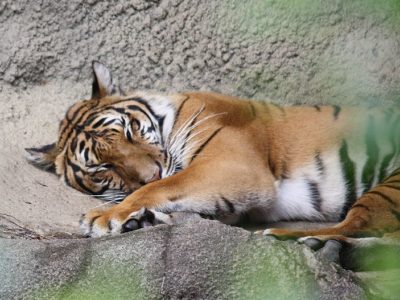
Indochinese Tiger
Now thought to be extinct in China!

Insects
There are an estimated 30 million species!
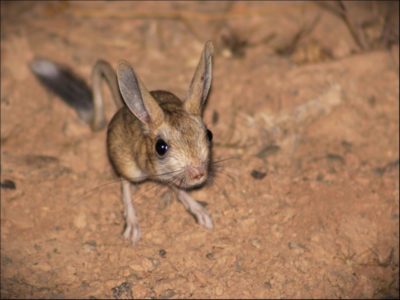
Jerboa
Tiny rodent with a kangaroo-like jump!

Jumping Spider
Some can jump 50 times the length of their bodies

King Cobra
They are the longest venomous snake in the world.

Kingfisher
Inhabits wetlands and woodlands worldwide!
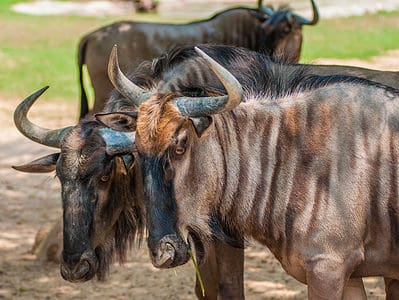
Kouprey
The kouprey is one of the rarest mammals in the world

Ladybug
There are more than 5,000 species worldwide!

Leech
Has 10 pairs of eyes!

Leopard Cat
There are 11 different species!

Liger
The offspring of a lion and tiger parents!

Lizard
There are around 5,000 different species!
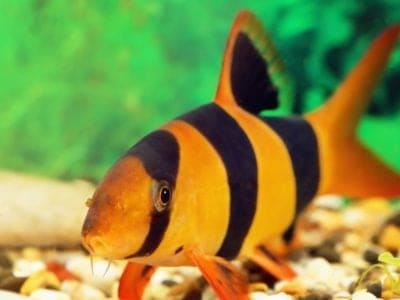
Loach
Have sharp spines below their eyes

Locust
Each locust can eat its weight in plants each day.

Long-Eared Owl
Ear tufts make it look bigger!
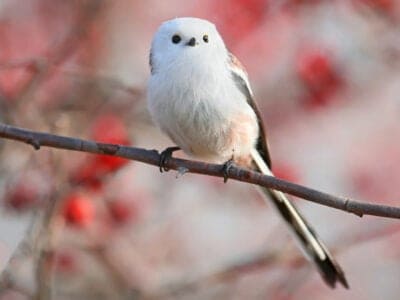
Long-Tailed Tit
Often hangs upside down while feeding!
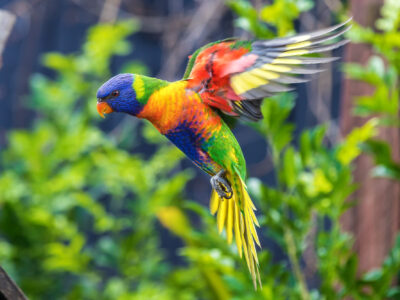
Lorikeet
The lorikeet has a long brush-like tongue with fine hairs on it

Loris
Like all lorises, slow loris has a cute wide-eyed look, but it also has a venomous sting that can rot human flesh.

Magpie
They are found across Europe, Asia and Africa!
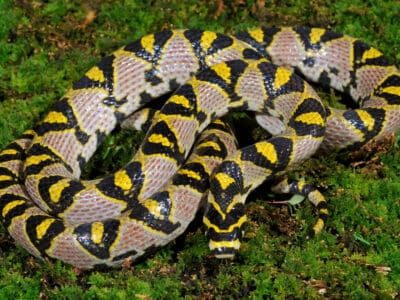
Mandarin Rat Snake
"This docile snake is a popular and long-lived pet - though challenging to care for - with a lifespan of up to 21 years!"

Masked Palm Civet
Found throughout Asia, India and China!

Mayfly
There are 2,500 known species worldwide!

Mealybug
They have a symbiotic relationship with ants.

Mekong Giant Catfish
The Mekong giant catfish is the largest purely freshwater fish in the world

Millipede
Some species have a poisonous bite!

Mole
Primarily hunts and feeds on Earthworms!
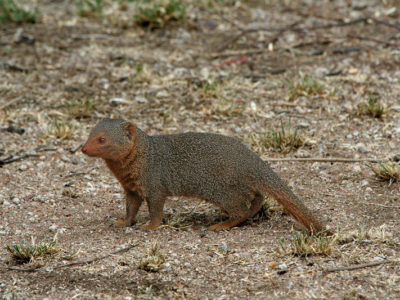
Mongoose
Range in size from just 1 to 3 foot!

Mongrel
Has characteristics of two or more breeds!

Monitor Lizard
Some species are thought to carry a weak venom!

Monkey
There are around 260 known species!

Moorhen
Feeds on aquatic insects and water-spiders!

Mosquito
Only the female mosquito actually sucks blood

Moth
There are 250,000 different species!

Mouse
Found on every continent on Earth!

Mule
The offspring of a horse and donkey parents!

Muntjac
The muntjac is the smallest type of deer in the world
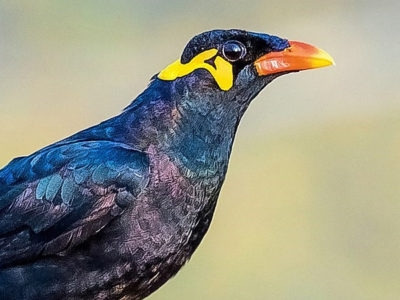
Myna Bird
Many people believe the hill myna bird is better at mimicking humans than a parrot!

Neanderthal
Roamed Asia and Europe for around 100,000 years!

Nematode
Nematodes range in size from 1/10 of an inch to 28 feet long

Newt
Able to regrow lost or damaged limbs!

Nightingale
Named more than 1,000 years ago!

No See Ums
There are more than 5,000 species.

Northern Pintail
Northern pintails migrate at night with speeds reaching 48 miles per hour!

Orb Weaver
Females are about four times the size of males

Otter
There are 13 different species worldwide

Owl
The owl can rotate its head some 270 degrees
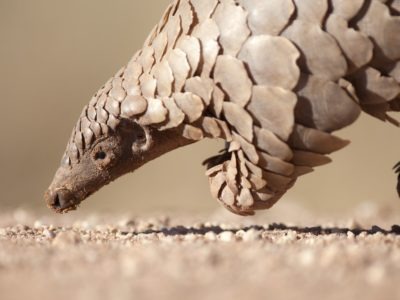
Pangolin
Bad eyesight, but great sense of smell

Parrot
Can live for up to 100 years!
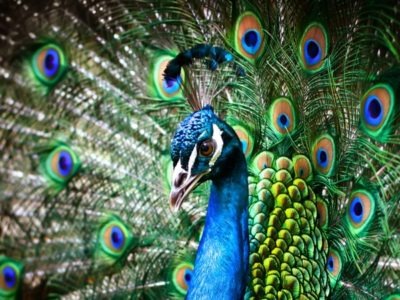
Peacock
Most commonly found on the Indian mainland!

Peregrine Falcon
Fastest animal on Earth

Pheasant
Females lay between 8 and 12 eggs per clutch!

Pheasant-tailed Jacana
The pheasant-tailed jacana is the only species in its family that migrates long distances.

Pig
Thought to have been domesticated in 9,000 BC!

Pigeon
They can find their way back to their nests from up to 1300 miles away.

Pika
Found in mountainous regions and rocky areas

Pipe Snake
Some of these snakes flatten their neck and raise their heads to imitate cobras if they’re threatened.
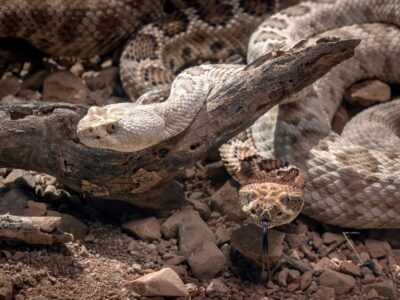
Pit Viper
Pit vipers's fangs fold up into their mouths when they don't need them.

Pond Skater
There are 500 different species!

Porcupine
There are 30 different species worldwide!

Praying Mantis
The mantis can turn its head 180 degrees.

Quail
Inhabits woodland and forest areas worldwide!

Rabbit
There are more than 300 different species!

Rat
Omnivores that eat anything!

Rat Snakes
Rat snakes are constrictors from the Colubridae family of snakes.
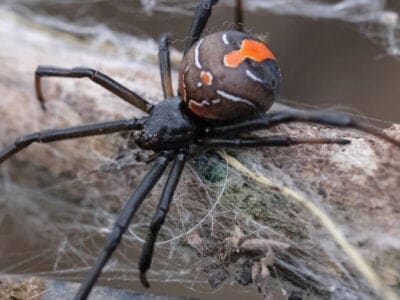
Redback Spider
The redback spiders found in New Caledonia differ from other populations in that they don’t practice sexual cannibalism and don’t bite people as much.
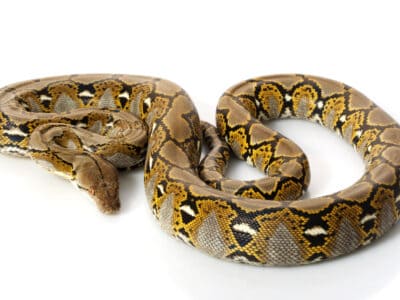
Reticulated python
These popular pets can get big enough to kill their owner.

Rhesus Macaque
Rhesus Macaques are the most widely distributed primate in terms of geographic diversity

Rhinoceros
It's horns are made from keratin!

River Turtle
Inhabits freshwater habitats around the world!

Robin
There are more than 45 species in Australia alone!

Rodents
The capybara, the world’s largest rodent, likes to be in and around bodies of water. Because of this, the Catholic Church in South America decided that it was a fish, and people were allowed to eat it during Lent and First Fridays.

Rooster
Will mate with the entire flock!

Sable Ferret
Ferrets were used during the Revolutionary War to keep down the rat population.

Salamander
There are more than 700 different species!
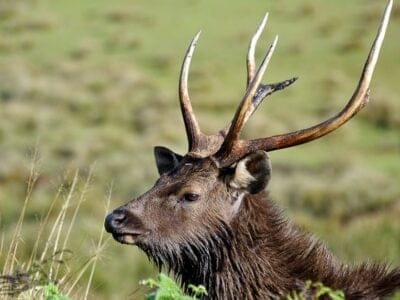
Sambar
Male sambars will compete for mates by clashing together with their antlers

Saola
Only known to science since 1992!

Scorpion
There are around 2,000 known species!

Sea Eagle
The sea eagle tends to mate for life with a single partner

Seahorse
Males give birth to up to 1,000 offspring!

Sheep
Around 35 million in the English countryside!

Shrew
The spinal column of the shrew Scutisorex somereni is so strong and reinforced that it can support the weight of an adult human.

Shrimp
There are 2,000 different species worldwide!

Betta Fish (Siamese Fighting Fish)
Can live in low-oxygen environments!

Skink Lizard
Some skinks lay eggs in some habitats while giving birth to skinklets in other habitats.

Slow Worm
Found widely throughout British gardens!

Slug
They glide around on one foot, which is aided by the slime they produce

Smokybrown Cockroach
Has up to 45 eggs per egg case

Snail
There are nearly 1,000 different species!

Snake
There are around 4,000 known species worldwide

Sparrow
There are 140 different species!

Spider Wasp
They prey on spiders to feed their larvae or they parasitize other spider wasps.
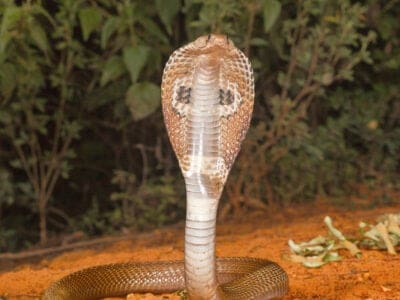
Spitting Cobra
Spitting cobras are types of cobras that can spit venom at predators and prey.

Squirrel
Small rodents found in woodlands worldwide!

Stick Insect
There are more than 3,000 different species!

Stoat
Average adults weigh about 200 grams!

Stork
They can’t sing like other birds.

Sun Bear
The smallest species of bear in the world!

Sunbeam Snake
Sunbeam snakes have two lungs instead of just a single lung like most snake species.

Swan
Populations have been affected by pollution!

Tapir
Most closely related to horses and rhinos!

Tarantula Hawk
Tarantula hawks are excellent pollinators, especially for milkweed.

Termite
Their mounds can be up to 9 meters tall!

Thrush
The American robin is called the robin because its red breast reminded European settlers of the robin back in the old country.

Tick
They inject hosts with a chemical that stops them from feeling the pain of the bite
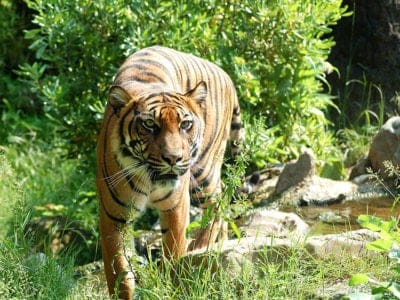
Tiger
The largest feline in the world!

Tiger Beetle
The adult tiger beetle is one of the fastest land insects in the world

Tokay Gecko
The Tokay gecko gets its onomatopoeic name from its "To-kay!" barking call.

Tortoise
Can live until they are more than 150 years old!

Tree Frog
Found in warmer jungles and forests!
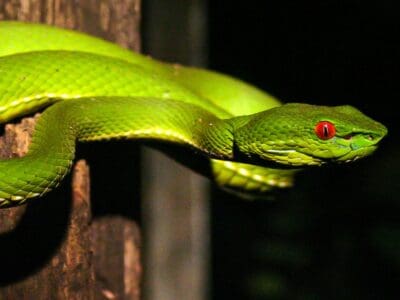
Tree Viper (Bamboo Viper)
Pit vipers can strike accurately at moving objects less than .5 degrees Farenheit warmer than the background.

Turtles
Some species of aquatic turtles can get up to 70 percent of their oxygen through their butt.

Vinegaroon
Vinegaroons can spray 19 times before the glands are depleted

Viper
Vipers are one of the most widespread groups of snakes and inhabit most

Vulture
There are 30 different species worldwide!

Wasp
There are around 75,000 recognised species!

Water Buffalo
Has been domesticated for thousands of years!
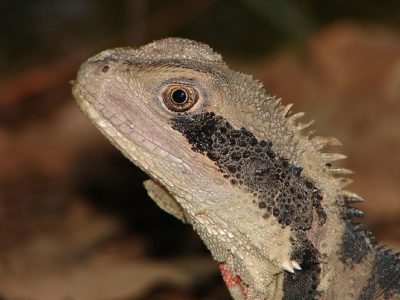
Water Dragon
Spends most of it's time in the trees!

Weasel
The smallest carnivorous mammal in the world!

White Ferret / Albino Ferrets
There are two different types of white ferrets!

White Tiger
None have been seen in the wild for 50 years!
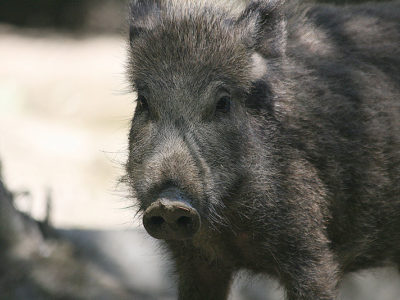
Wild Boar
Males have a top tusk to sharpen the bottom one!

Wolf
Thought to date back more than 300,000 years!
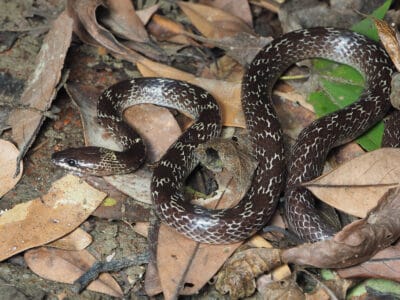
Wolf Snake
Harmless, but with fangs like a wolf.

Wolf Spider
Carnivorous arachnid that hunts its prey.

Woodlouse
This animal can roll up into a ball

Woodlouse Spider
Unlike most spiders, woodlouse spiders don’t build a web.

Woodpecker
There are 200 different species!

Worm
Doesn’t have eyes.
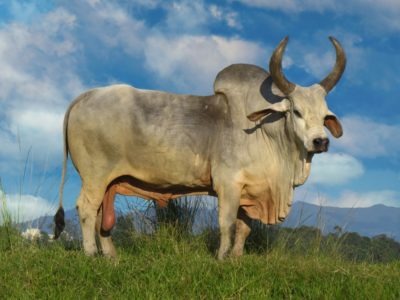
Zebu
There are around 75 different species!
Lao Animals List
- Admiral Butterfly
- Ant
- Antelope
- Archerfish
- Armyworm
- Asian Elephant
- Asian Giant Hornet
- Asian Palm Civet
- Atlas Moth
- Aurochs
- Bamboo Rat
- Bamboo Worms
- Banana Spider
- Barb
- Barn Owl
- Barn Swallow
- Bat
- Bear
- Beauty rat snake
- Bed Bugs
- Bee
- Beetle
- Binturong
- Bird
- Biscuit Beetle
- Black Widow Spider
- Blind Snake
- Brahminy Blindsnake
- Brazilian Treehopper
- Bronze-winged Jacana
- Brown Dog Tick
- Bumblebee
- Burmese Python
- Butterfly
- Camel Cricket
- Carpenter Ant
- Cashmere Goat
- Cat
- Caterpillar
- Catfish
- Centipede
- Chicken
- Cicada
- Cinereous Vulture
- Clouded Leopard
- Cockroach
- Codling Moth
- Common Buzzard
- Common Furniture Beetle
- Common House Spider
- Common Raven
- Coral Snake
- Cormorant
- Cosmic Caterpillar
- Cow
- Cow Reticulated Python
- Crab
- Crab-Eating Macaque
- Crab Spider
- Crane
- Cricket
- Crocodile
- Crocodylomorph
- Crow
- Cuckoo
- Deer
- Dhole
- Dog
- Dog Tick
- Donkey
- Dormouse
- Douc
- Draco Volans Lizard
- Dragonfly
- Duck
- Dung Beetle
- Eagle
- Earthworm
- Earwig
- Eel
- Elephant
- Falcon
- False Widow Spider
- Fiddler Crab
- Fire-Bellied Toad
- Fire Eel
- Firefly
- Flea
- Fly
- Flying Lemur
- Flying Squirrel
- Fox
- Frog
- Fruit Bat
- Fruit Fly
- Gazelle
- Gecko
- Gerbil
- German Cockroach
- Gibbon
- Glass Lizard
- Glowworm
- Gnat
- Goat
- Golden Oriole
- Goose
- Grasshopper
- Green Bee-Eater
- Green Rat Snake
- Gypsy Moth
- Hamster
- Hare
- Hawk Moth Caterpillar
- Hedgehog
- Heron
- Honey Bee
- Hoopoe
- Horse
- Horsefly
- Horseshoe Crab
- Housefly
- Human
- Huntsman Spider
- Ibis
- Indian Elephant
- Indochinese Tiger
- Insects
- Jerboa
- Jumping Spider
- King Cobra
- Kingfisher
- Kouprey
- Ladybug
- Leech
- Leopard Cat
- Liger
- Lizard
- Loach
- Locust
- Long-Eared Owl
- Long-Tailed Tit
- Lorikeet
- Loris
- Magpie
- Mandarin Rat Snake
- Masked Palm Civet
- Mayfly
- Mealybug
- Mekong Giant Catfish
- Millipede
- Mole
- Mongoose
- Mongrel
- Monitor Lizard
- Monkey
- Moorhen
- Mosquito
- Moth
- Mourning Gecko
- Mouse
- Mule
- Muntjac
- Myna Bird
- Neanderthal
- Nematode
- Newt
- Nightingale
- No See Ums
- Northern Pintail
- Orb Weaver
- Otter
- Owl
- Ox
- Pangolin
- Parrot
- Peacock
- Peregrine Falcon
- Pheasant
- Pheasant-tailed Jacana
- Pig
- Pigeon
- Pika
- Pipe Snake
- Pit Viper
- Pond Skater
- Porcupine
- Praying Mantis
- Quail
- Rabbit
- Rat
- Rat Snakes
- Redback Spider
- Reticulated python
- Rhesus Macaque
- Rhinoceros
- River Turtle
- Robin
- Rodents
- Rooster
- Sable Ferret
- Salamander
- Sambar
- Saola
- Scorpion
- Sea Eagle
- Seahorse
- Sheep
- Shrew
- Shrimp
- Betta Fish (Siamese Fighting Fish)
- Skink Lizard
- Slow Worm
- Slug
- Smokybrown Cockroach
- Snail
- Snake
- Sparrow
- Spider Wasp
- Spitting Cobra
- Squirrel
- Stick Insect
- Stoat
- Stork
- Sun Bear
- Sunbeam Snake
- Swallowtail Butterfly
- Swan
- Tapir
- Tarantula Hawk
- Termite
- Thrush
- Tick
- Tiger
- Tiger Beetle
- Tokay Gecko
- Tortoise
- Tree Frog
- Tree Viper (Bamboo Viper)
- Turtles
- Vinegaroon
- Viper
- Vulture
- Wasp
- Water Buffalo
- Water Dragon
- Weasel
- White Ferret / Albino Ferrets
- White Tiger
- Wild Boar
- Wolf
- Wolf Snake
- Wolf Spider
- Woodlouse
- Woodlouse Spider
- Woodpecker
- Worm
- Zebu
Animals in Lao Peoples Democratic Republic FAQs (Frequently Asked Questions)
What kind of animals live in Laos?
While there’s a decent amount of diversity in the habitats scattered throughout Laos, the country’s predominant ecosystem is the rainforest. As a result, it’s home to some of the most exotic wildlife we associate with the jungle. These include fierce jungle cats like the clouded leopard, numerous species of primate, rare Siamese crocodiles, and hundreds of bird species. But less densely forested areas allow for larger herbivores like pigs, kouprey, and elephants to find a life in Laos as well.
Are there monkeys in Laos?
There are actually no monkeys in Laos, but the country is home to a decent variety of apes that are primates like monkeys. Six different species of gibbon call Laos their home — a feature of note considering that gibbons are on the brink of going extinct entirely. Although they aren’t at risk of going extinct, macaques are also notable residents thanks to their remarkable intelligence and friendliness towards humans.
Are there still tigers in Laos?
Unfortunately, tigers are considered functionally extinct in Laos. While there may be a few lone tigers who live in Laos or pass through seasonally, there are no functioning communities of tigers in Laos. The same is true for Vietnam. This is in contrast to areas like China, Nepal, and Russia where tiger populations are actually beginning to grow.
Are pandas in Laos?
No species of panda is endemic to Laos, but sometimes pandas end up in the country as a result of illegal trafficking. For instance, a pair of red pandas were recovered in Laos during a smuggling bust, and they were moved to a wildlife sanctuary for recovery and integration. You’ll have to travel to China to see a giant panda, or the Eastern Himalayas to spot a red panda.






